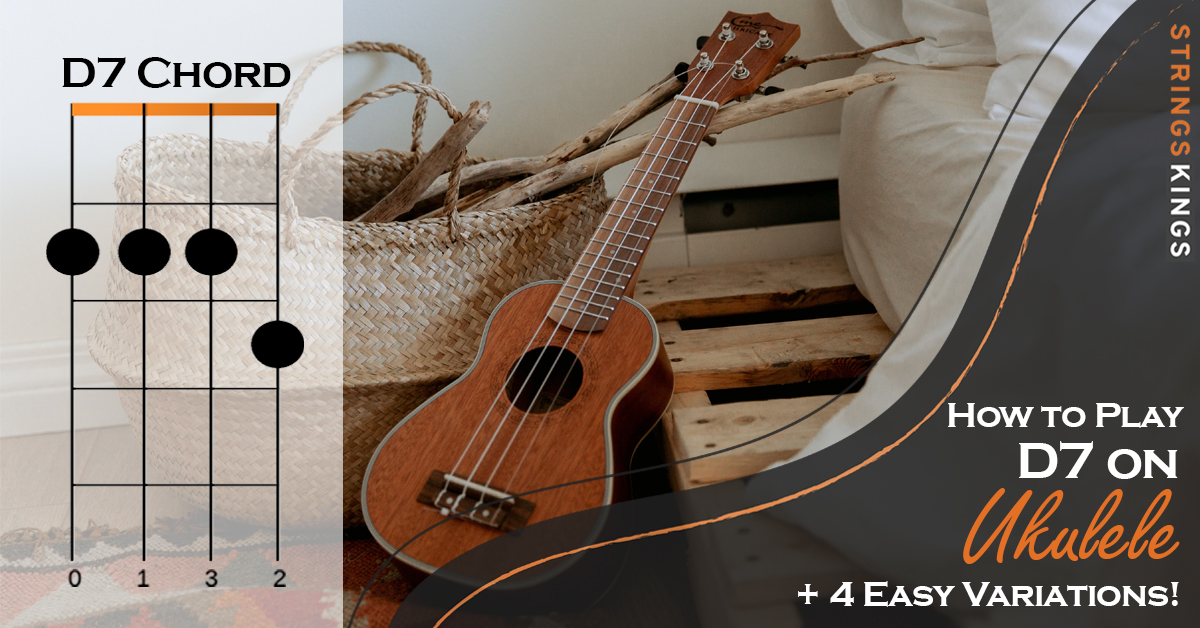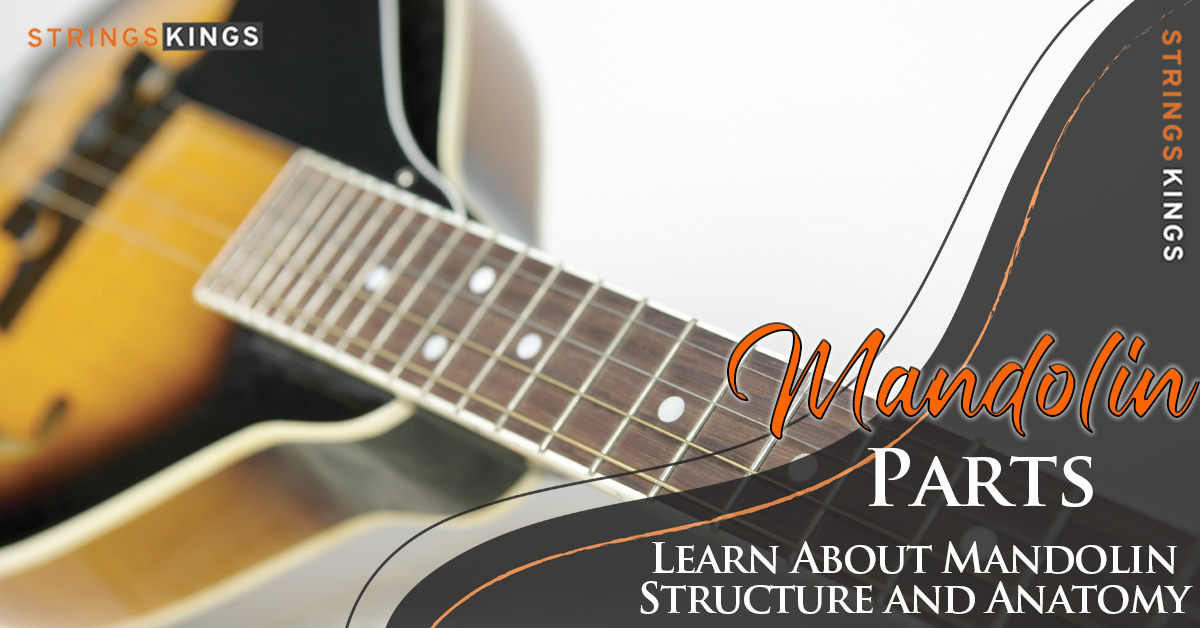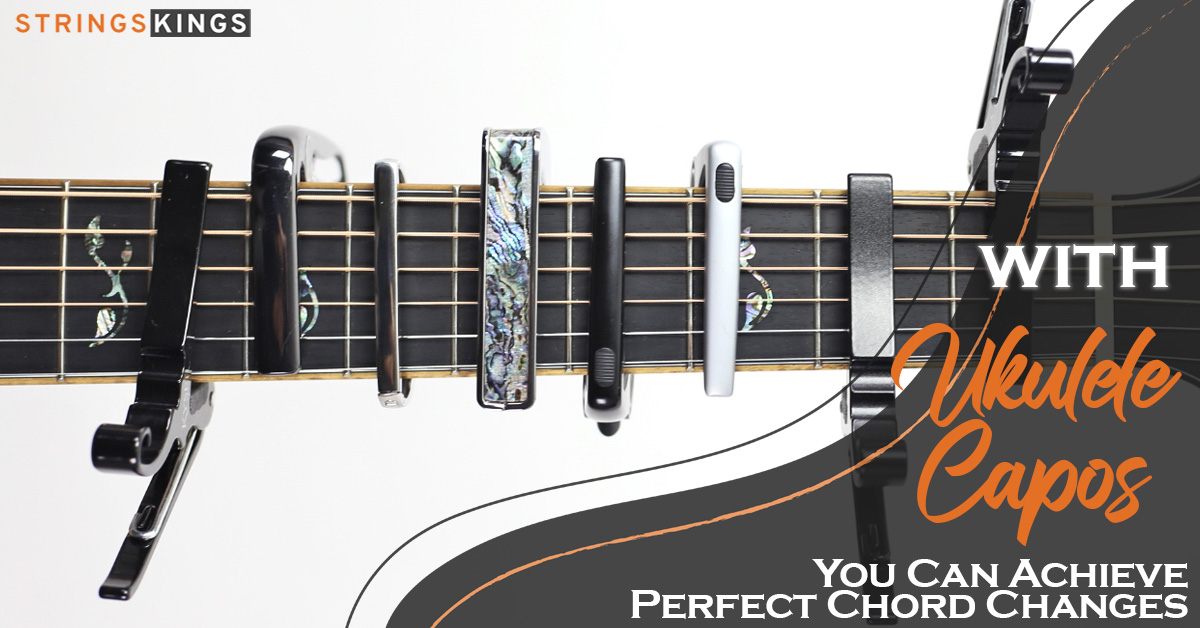Table of Contents
How to Play C7 on Ukulele
Introduction
Yet another 7th chord for our guide on how to play ukulele chords. We are at the point where we will explain how to play C7 on a ukulele. Believe us, this is one other chord where the root position of playing it is really simple. You just need to memorize the position and you will have no hassle playing. Only one string will need to be pressed, so no breaking fingers to perform it.
Also, as per usual, we will provide you with several other inversions of this chord, because it’s always good to know how to play different positions of it. C7 is in the family of dominant seventh chords and we will cover all of them on our website.
The C7 chord comprises the notes C-E-G-Bb. To construct a C7 chord, take the dominant seventh method (1-3-5-b7) and apply it to the C major scale (C, D, E, F, G, A, B). Establish the primary, third, fifth, and flat seventh scale degrees within the C major scale that are C-E-G-Bb.
Notice how the seventh scale degree found within the chord is lowered a half step as indicated by the “flat” or “b” that precedes the number “b7”. In the seventh scale degree of a C major scale, a “B” note is lowered a half step to a “Bb” note to make the chord a dominant seventh chord.

Play C7 on Ukulele: How to Play It
One other super simple chord is the C7, which solely takes one finger! Merely use your index finger to play the first fret of the A string. Watch out to not contact the E string along with your finger or it’ll mute that one and sound off. Ensure that all of the notes play as you slowly pluck the chord.
This easy chord also has some variations that are simple to master, but not as simple as the root position. Anyway, we will share them with you, just to have a notion of what is happening down the fretboard if you want to perform C7 in a different way.
Now we will continue with our usual explanation of how the root and the variations we picked are pressed and played.
C7 Ukulele Chord: Root Position
The root position of this chord requires pressing only one string on the first fret. As we already mentioned, just be careful and press only the string you need to and strum all of them to produce the chord. Here is what you will need to do:
- Use your Index finger to press the A string on the 1st fret.

Simple as that. Just let the other three strings ring open while pressing it – no hardship here. Let’s check out the first variation, which will not be as simple as this one.
C7 Ukulele Chord: 1st Inversion
The second variant of this chord is a bit more complex and we wanted to have one complex option, so we can explain in-depth how to press it and engage you in learning some new, not that simple positions of this chord. You will need to press all the strings for this chord and here is how you will need to do it:
- Use your Index finger to press the G string on the 3rd fret.
- Use your middle finger to press the E and A string on the 3rd fret as well.
- Use your ring finger to press the C string on the 4th fret.

As always, you are able to find the best and easiest way to perform this chord, and that is if you barre all the strings on the third fret and use your middle finger to press the C string on the 4th fret. How you will do it is up to you and which variation of it you will choose.
C7 Ukulele Chord: 2nd Inversion
To play the 2nd inversion of the C7 chord on the ukulele, you will need to press only two strings and leave the two other to ring open. You will go down a bit on the fretboard, but that should be no problem for you. Just follow the instructions below and you’ll be good. Here’s how:
- Use your Index finger to press the E string on the 6th fret.
- Use your middle finger to press the A string on the 7th fret.

For this example, you need to leave the G and C strings to ring freely and that’s it. One other easy variation of the C7 chord.
C7 Ukulele Chord: 3rd Inversion
There are several other versions of this chord in between the one we are going to talk about now, but if you want to tie your fingers. So we decided to leave them out and provide you with one other that is pretty similar to the root one, just you need to press it way down on the fretboard.
- Use your Index finger to press the A string on the 13th fret.
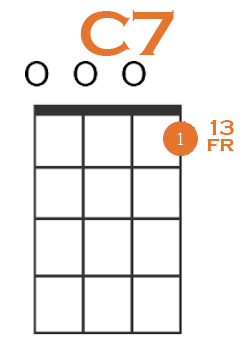
Again, leave all three other strings to play open to perform this C7 inversion and you will have no problems mastering this one as well.
How to Play C7 Chord on Piano
Widespread names for this chord are C7, C dominant 7, and C dom7. A seventh chord consists of a triad plus a note forming an interval of a seventh above the foundation of the chord.
The notes of the C major scale are C D E F G A B C. To form a C dom7 chord, mix the first, third, fifth, and flat seventh note of the C main scale. (1 – 3 – 5 – 7b). These are the foundation, major third, perfect fifth, and minor seventh of the scale. The notes utilized in a C7 chord are C E G and Bb. Note carefully that the seventh note is lowered by a semitone. As an alternative to playing B, you play B flat.
Notes C – E – G – Bb.

Famous Songs that use the C7 Ukulele Chord
One of the most famous easy songs that have a C7 chord is “Mary Had a Little Lamb“ The chord uses for this child song are F and C7. No hardship to perform it cause it is made to be easy so every kid will be able to sing along and play it at some point.
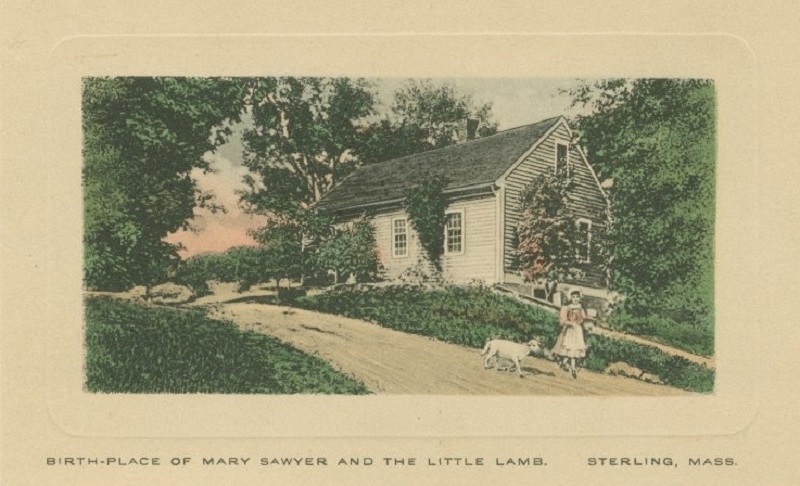
For simple playing and especially for beginners on the ukulele, this is one of the easiest strumming patterns that go down only. In case you are searching for some advanced lessons you can check some of our other guides.


Conclusion
Again we are at the end of another lesson on how to play this dominant seventh chord – and in this case, that was the C7 chord. For this one, you will need just to memorize the position because the root position is really simple to do.
With this one, you will have a brand new specter of songs opened, because most of the easy songs have easy chords in them – and this one is one of them.
Please let us know if you have any wish of a particular chord that you want us to cover, of course below in the comment section. Until next time Ukelites!


